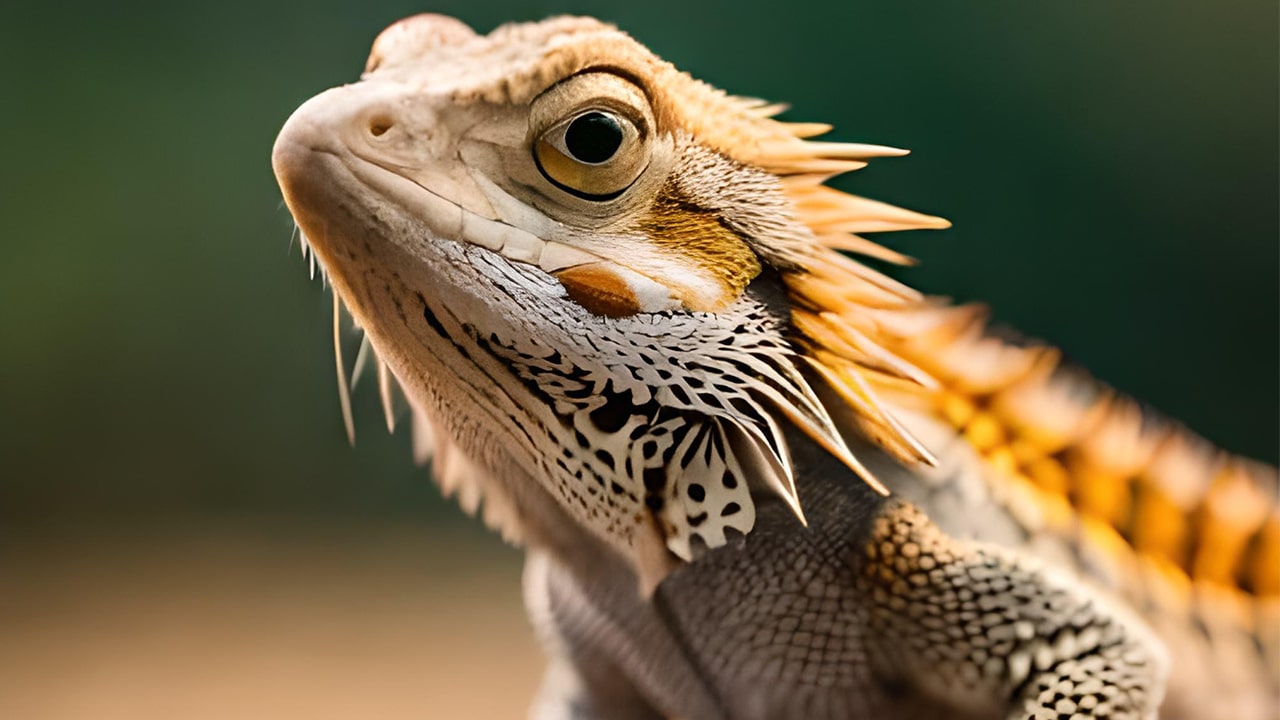Owning a bearded dragon is a rewarding experience. These lizards are known for their docile nature and unique personalities. However, proper care is necessary to keep them healthy and happy. In this article, we will provide a comprehensive care sheet for bearded dragons and share 9 essential tips to ensure their well-being.
Contents
1. Habitat and Housing
Tank Size
Bearded dragons need a spacious tank to thrive. A 40-gallon tank is the minimum size required for a single adult bearded dragon. However, larger tanks are always better, providing more space for exercise and exploration.
Substrate
The substrate should be chosen carefully, as bearded dragons are prone to impaction. Sand should be avoided, as it can cause blockages in their digestive system. Instead, opt for non-particle substrates like reptile carpet, newspaper, or ceramic tiles.
Lighting and Heating
Bearded dragons require both UVB lighting and heat lamps to maintain their health. The UVB lighting helps them synthesize Vitamin D3, essential for proper calcium absorption, while the heat lamp provides a basking spot for them to regulate their body temperature.
Decorations and Hides
Bearded dragons love to explore and climb, so providing them with a variety of decorations like rocks, branches, and fake plants can help keep them mentally stimulated. Hides are also important, providing a sense of security and privacy.
2. Feeding and Nutrition
Diet
Bearded dragons are omnivores, and their diet should consist of both insects and vegetables. Crickets, mealworms, and dubia roaches are great protein sources, while dark leafy greens, squash, and bell peppers are excellent vegetable options.
Supplements
Calcium and Vitamin D3 supplements should be added to their food to ensure proper bone growth and prevent metabolic bone disease. Multivitamin supplements should also be given occasionally to ensure they are getting all the necessary nutrients.
Water
Bearded dragons require fresh water daily. However, they often prefer to drink water droplets from misting or licking water off leaves. So, it is recommended to mist their tank daily or provide a shallow water dish.
3. Health and Hygiene
Regular Vet Checkups
Bearded dragons need regular vet checkups to ensure they are healthy and to catch any health issues early on. A yearly checkup is recommended.
Shedding
Bearded dragons shed their skin regularly. Provide them with a humid hide to help the shedding process and prevent skin from drying out and becoming stuck.
Parasites and Illness
Bearded dragons are susceptible to parasites and illnesses. Common symptoms include lethargy, loss of appetite, and abnormal feces. If any of these symptoms occur, seek veterinary care immediately.
4. Behavior and Training
Taming
Young bearded dragons may need to be tamed before they become comfortable with handling. To do this, start by offering them food by hand and gradually increase physical contact.
Enrichment
Bearded dragons are intelligent animals and require mental stimulation. Provide them with toys, puzzles, and hiding places to keep them mentally active and prevent boredom.
5. 9 Essential Tips for Bearded Dragon Care
- Do not house two or more bearded dragons together unless they are of similar size and gender.
- Avoid feeding wild-caught insects, as they may carry parasites or diseases.
- Do not use sand or loose substrate in the tank.
- Monitor the temperature and humidity levels in the tank regularly.
- Do not feed bearded dragons spinach or kale, as they contain high levels of oxalates that can prevent calcium absorption.
- Always provide fresh water and mist the tank regularly.
- Keep the tank clean to prevent the buildup of bacteria and parasites.
- Do not handle bearded dragons too much during the shedding process, as it can be uncomfortable for them.
- Be patient when taming and training bearded dragons, as it can take time for them to become comfortable with handling.

6. Conclusion
Owning a bearded dragon can be a wonderful experience. However, it is important to provide proper care to ensure their health and well-being. By following the guidelines outlined in this care sheet and the essential tips provided, you can ensure your bearded dragon lives a long and happy life.
7. FAQs
- How often should I feed my bearded dragon?
- Bearded dragons should be fed once a day when they are young and twice a day when they are adults.
- Can I use sand as a substrate for my bearded dragon?
- No, sand can cause impaction and blockages in their digestive system. Non-particle substrates like reptile carpet, newspaper, or ceramic tiles are recommended.
- What temperature should the tank be kept at?
- The basking area should be kept between 95-105°F (35-40°C) and the cooler side of the tank should be kept between 75-85°F (24-29°C).
- Can bearded dragons live together?
- Bearded dragons should not be housed together unless they are of similar size and gender.
- How often should I clean my bearded dragon’s tank?
- The tank should be spot cleaned daily and fully cleaned and disinfected every few weeks.


